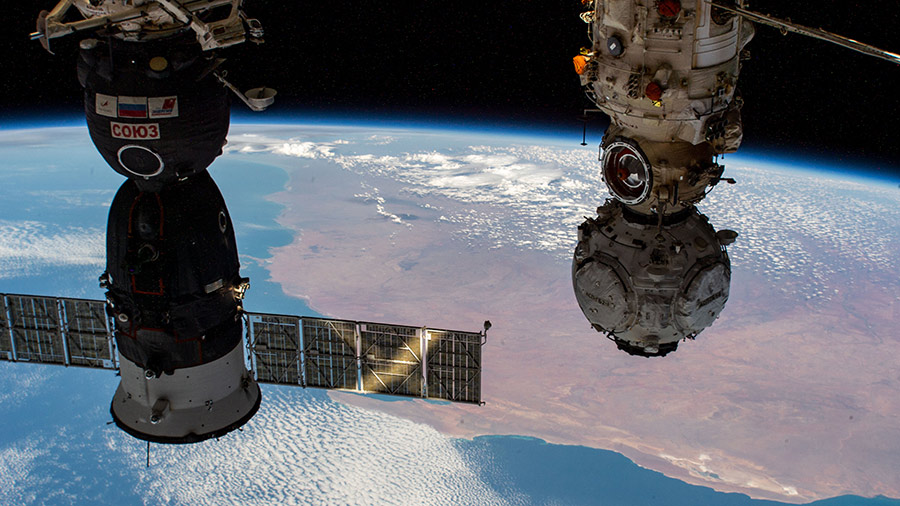Crew Starts Week with Space Agriculture, Human Cells and Spacesuits

The Expedition 66 crew kicked off Monday promoting space agriculture and observing how the human cell adapts to weightlessness. Two cosmonauts are also gearing up for the first spacewalk of 2022 set to begin next week at the International Space Station.
Growing plants in space is critical to keeping crews healthy as NASA and its international partners plan human missions to the Moon, Mars and beyond. Just like humans living in space, microgravity affects plants and scientists want to learn how to successfully grow crops in space to sustain crews with less support from Earth.
Today, NASA Flight Engineer Mark Vande Hei harvested the shoots and roots of Arabidopsis plants grown on petri plates inside the Veggie facility. Fellow NASA Flight Engineer Raja Chari collected the harvested samples and stowed them in a science freezer for later analysis. The APEX-07, or Advanced Plant Experiment-07, study is looking at how microgravity affects genetic expression in plants.
ESA (European Space Agency) astronaut Matthias Maurer worked throughout Monday on the Cytoskeleton space biology study. That study takes place in the Kibo laboratory module and uses the Life Science Glovebox to explore how the internal machinery of the human cell is impacted by long-term space missions.
NASA Flight Engineer Kayla Barron also worked in Kibo and set up the new Mochii electron-scanning microscope to identify trace particles aboard the station. NASA astronaut Thomas Marshburn fed mice and cleaned their habitats throughout Monday before inspecting and cleaning hatch seals in the station’s U.S. segment.
Commander Anton Shkaplerov and Flight Engineer Pyotr Dubrov partnered together during the morning on a pair of Russian studies looking at how space affects heart activity and arm muscles. The duo later spent the rest of the day setting up Russian Orlan spacesuits for a spacewalk set to begin on Jan. 19. The two cosmonauts will spend about seven hours in the vacuum of space outfitting the station’s newest modules, Nauka and Prichal.
Learn more about station activities by following the space station blog, @space_station and @ISS_Research on Twitter, as well as the ISS Facebook and ISS Instagram accounts.
Get weekly video highlights at: http://jscfeatures.jsc.nasa.gov/videoupdate/
Get the latest from NASA delivered every week. Subscribe here: www.nasa.gov/subscribe
Mark Garcia
Powered by WPeMatico



